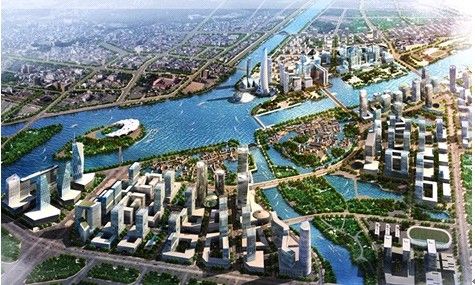Don't transfer urban diseases to Tongzhou
- By Pan Jiahua
 0 Comment(s)
0 Comment(s) Print
Print E-mail China Daily, July 23, 2015
E-mail China Daily, July 23, 2015
|
|
|
The overall plan of Tongzhou district, Beijing. |
With Beijing deciding to focus on its role as China's capital, its southeastern Tongzhou district is expected to see remarkable real estate development by 2017 as it becomes the city's "subsidiary administrative center".
To relocate its non-capital functions, Beijing will shift many industries and organizations to suburban areas, and neighboring Hebei province and Tianjin municipality, boosting its integration with the two regions in the process.
As the de facto "administrative center" of Beijing, Tongzhou district should be able to take care of more than the city's political and cultural functions. Following the shifting of local administrative bodies and activities, Tongzhou is expected to ease the traffic congestion in and environmental pressure on the downtown area.
Besides, the district, now home to about 1.36 million people, will be able to provide more quality public services in the fields of education, healthcare and culture. With more capital flowing into the Tongzhou administrative district, top universities and schools, hospitals, and cultural centers, which used to be an urban privilege, will also become available to people living there.
The about 906-square-kilometer Tongzhou district can accommodate the business and other establishments which now crowd Beijing's central area, becoming a new pole of regional growth in the post-industrialization era.
Of course, Tongzhou district is supposed to have its own public facilities and services. But it does not necessarily mean that all administrative functions and superior public resources should be concentrated in one area. In essence, it should be different from major Chinese cities, including Beijing, and most provincial capitals.







Go to Forum >>0 Comment(s)